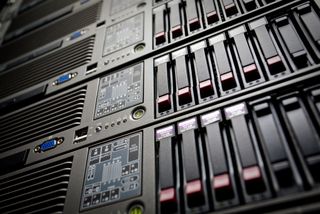Seagate snaps up Samsung HDD business
The US hard drive company adds to its line with Samsung’s struggling division.

Seagate's $1.4 billion (854 million) acquisition of Samsung's loss-making hard disk drive (HDD) business pits it head-to-head with Western Digital in an industry that has been dogged by price wars.
The sector is battling persistent sales declines and faces a longer-term threat from wireless tablet devices such as Apple's iPad that use more power-efficient solid state drives (SSD).
However, Seagate chief financial officer (CFO) Patrick O'Malley downplayed those concerns, saying increasing use of data would drive demand for storage.
"We look at tablets as a good thing as they will spur data-rich consumption, which is certainly good for storage and HDD storage," he told Reuters.
The rising popularity of tablets is expected to drive demand for external drives and for cloud storage, helping companies like Seagate.
"SSD business is primarily in the enterprise space. Today, it is still a small percentage, but longer term it could be 5-10 per cent of the total enterprise market," O'Malley said.
"Mainframe enterprises the Yahoos and Googles of the world have a lot of storage needs."
Get the ITPro. daily newsletter
Receive our latest news, industry updates, featured resources and more. Sign up today to receive our FREE report on AI cyber crime & security - newly updated for 2024.
Both Seagate and Western Digital have been struggling to adapt to a future where fewer consumers have laptops and many view flash drive as the future of the disk drive industry.
The deal will give Seagate access to Samsung's NAND-type flash chips for its SSD products.
It comes just a month after Western Digital said it would buy the HDD unit of Hitachi a known price aggressor for $4.3 billion.
The acquisition will increase Seagate's market share to 40 per cent, while Western Digital and Hitachi combined will have around half the market, Rodman and Renshaw's Ashok Kumar said.
"Hard disk drive is a commodity business. It's very hard to make money if rivals try to undercut each other," said Wedbush Securities analyst Kaushik Roy, noting there should be fewer price wars with only three players left standing.
Toshiba, which bought Fujitsu's HDD unit in 2009, will have around a 10 per cent market share.
Seagate had sales last year of $11.4 billion, while Western Digital posted 2010 revenue of $9.85 billion.
For Samsung, the world's largest technology firm by revenue, exiting the cut-rate HDD industry will allow it to focus on its bread-and-butter memory chip business.
After the deal, Samsung will supply NAND-type flash chips to Seagate, while it will source Seagate HDD for PCs, laptops and consumer electronics products. Seagate will also get access to Samsung's customer base across China and Southeast Asia.
"We are not huge consumers of NAND right now, which has somewhat restricted our access to that (SSD) market because we don't have key supply. Now we have access to technology and supply," O'Malley said.
Western Digital is also looking to reap the benefits of Hitachi's partnership with Intel which allows it access to the chipmaker's NAND flash technology.
"Seagate and Western Digital were late in the SSD space, but they will gain a lot of market share as these guys have scale, relationships and the distribution channels," Roy said.
Analysts expect the entry of Seagate and Western Digital to create headwinds for smaller existing flash chip makers such as STEC and Ocz Technology Group.
The SSD market is currently dominated by Intel, Micron, Samsung and STEC.
Deal details
Samsung will receive 45.2 million Seagate shares about 9.6 per cent of the company worth $687.5 million and the rest will be paid in cash. With the deal, Samsung will become Seagate's second-largest shareholder.
Seagate expects the deal to "meaningfully" add to its earnings per share and cash flow in the first year, and said it plans no material restructuring costs.
Morgan Stanley was financial adviser to Seagate, while Allen & Co was financial adviser to Samsung.
Separately, Seagate posted third-quarter profit below market expectations on lower hard-drive shipments, and forecast a fourth-quarter profit below estimates.
The sale should give South Korean giant Samsung more firepower for acquisitions and expansion into new business areas such as healthcare and green energy.




